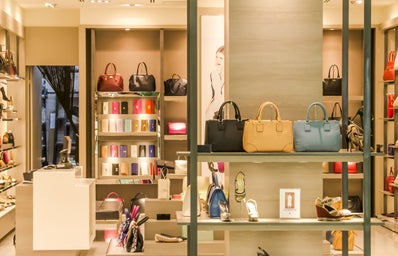I hate Mackelmore. From his flow, to the ridiculous hand gestures that he doesn’t seem to be able to open his mouth without making, I just can’t get on board. But despite my musical outrage, there is one thing on which we agree: thrifting is rad. As the rapper so annoyingly points out, shopping at thrift stores is great way to find the coolest things for super cheap.
Photo Credit: http://www.lifeinprogress.ca/.a/6a0120a95a88d5970b01a3fcba2dc4970b-800wi
Well as your friendly neighborhood environmental enthusiast, I have more good news: Not only is thrifting a fun and inexpensive thrill for you, it’s also a true embodiment of the familiar pillars of sustainability: reduce, reuse and recycle!
Reduce
Choosing to shop at thrift stores reduces the demand for new clothes. I’m no economist, but I do know that when demand decreases, these companies will make less of their products, which is beneficial for two reasons. The first is that a lot of resources go into making clothing. Natural resources are depleted when materials for clothing are harvested. The process of making clothes also often requires the use of chemicals and factories, which contribute to pollution that in part causes global climate change. Decreasing the amount of clothing made annually will reduce the stress on our planet.
If you go into your closet right now and look at many of the tags on your clothes, I think you’ll start to see a trend. Most of the clothes that we wear today are made in third-world countries, where the workers are paid unfairly and forced to work under stressful conditions.
A living wage is a wage that allows one to live above the poverty line. I used a living wage calculator from my hometown, Minneapolis, MN to find that a single person’s living wage in Minneapolis is $9.69 per hour. According to the US Bureau of Labor Statistics, in 2009 the average hourly wage across all fields for Chinese workers was $1.74. No matter how you spin it, this is not enough money to survive above the poverty line. By choosing to thrift, you can take a stand against these practices.
Reuse
Just because you’re done with something doesn’t mean that somebody else won’t want to wear it every day for the next year and a half. Thrifting is a great way to “reuse” other people’s clothing. And frankly, it is a far more sustainable practice in the long-term. It is no secret that our planet is quickly becoming pressed for resources. In the not-so-distant future, we are going to have to make some difficult decisions about what’s necessary, and I’m not sure that really cute black puffer vest is going to make the cut. By relying less on new resources, and more on things we already have, we can continue to enjoy the luxuries and trends that we do without causing more damage than it is worth.
Recycle
Because of their nature many of the fabrics that we wear today (synthetic fibers, or fibers dyed with synthetic dyes or coated with something or other) cannot be recycled. If we choose to throw old clothes out, it would eventually end up in a dump, where it may get shoved into a landfill, or incinerated, neither of which are very environmental safe or friendly practices.
But there is an alternative to this tragic fate. We can look at thrifting as a way to recycle clothing that would otherwise go to waste. And the really cool thing about this is that there are no regulations. I used to work at a recycling center, and you wouldn’t believe how often I said, “No, ma’am, that’s a number seven plastic, we can’t recycle that here.” But because there is no specific market in a thrift store and because there are no restrictions based on how the materials can be reused, you can donate anything and everything you want.
To be fair, thrift stores are sometimes a struggle. There are days when you go and spend three hours there to find two shirts, or one crossbody, or absolutely nothing. But there are also those days when the stars align and you get 15 new pieces for 40 dollars. You’ll see some truly hideous things, and your arms will hurt from pushing through the racks. But it’s an adventure, and more importantly it’s taking a stand for something that I believe we should all be willing to fight for: the health of our planet and other global citizens. So even when it’s a pain, I think that if you take the time to give it a try, you will find that it really is…
Photo Credit: http://8tracks.imgix.net/i/000/655/409/large__1_-9928.jpg?q=65&sharp=15&…


